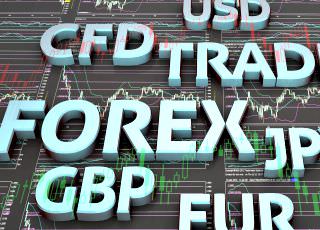Forex CFD: Foreign exchange and Contract for Difference
Forex CFD and currencies, when these two methods to make money are combined, the results are usually magnified – and such is the case with forex CFD. Providers, brokers and traders in forex and CFD are the best sources for information including tips, tricks and strategies in making more money with foreign exchange as the underlying asset for CFD...

Forex CFD and forex defined
The contract for difference refers to the agreement between two parties wherein both agree to make up for the difference between the starting and closing prices on the underlying asset. The underlying asset can be shares or currencies, among others. Basically, the transaction involves a leverage system or a differential agreement.
Foreign exchange (forex) pertains to the exchange of one monetary currency for another currency, such as the U.S. dollar with the Japanese yen. The transaction involves the changing values of the currencies being exchanged on the international market.
Thus, forex CFD refers to the agreement whereby two parties in the transaction agree to make up (give or receive) the difference between the starting and closing prices on the foreign exchange.
Rise and fall of currencies
Traders bet on the rise and fall of the currencies’ values when using the foreign exchange market as the underlying market for the CFD trade. Basically, the method involves leveraging off the money on hand with the aim of making more money with what little amount invested in the trade.
Keep in mind that with CFD trades, you are only required to put in a small fraction of the underlying assets’ market value, sometimes even just 1%. Your CFD provider will then cover the 99% remaining value of the underlying asset although you are still entitled or obligated to the same gains and losses, respectively, of the trade as if you have invested 100% of the market value.
Before trading, you should ask your provider about the actual percentage of market value that you will be required to put in for the currencies. Each provider will have different terms and conditions so be sure to check before putting in your bets, so to speak.
You will be attracted to CFD trades considering the small amount of investment required for the trade. But keep in mind that because forex CFD trades are based on the leverage system, all the gains and losses are also magnified – the gains are greater, but the risks are greater, too. You can lose much more money than you put into a trade so “Trader beware” is always a good mantra to remember.
Since the trades involve two markets – forex and CFD – you should master the basics of both markets in order to maximise your gains and minimise your losses. You can start by learning the forex market and then applying your knowledge and skills in the CFD market.
As a trader in the forex CFD market, you should also ask the provider for a Product Disclosure Statement (PDS) before opening your account; all CFD providers are, in fact, mandated by law to provide it. Be sure to read the statement since the terms and conditions, such as the margin requirements, are clearly stated on it.
Related articles
Trading signal service for you!
Understanding a cfd
Are market indices confusing to you?